This week's lamp I'm calling "woodArc1". It consists of a two mirror-image pieces of curved CNC'd plywood that contain channels to hold a thin aluminum bar and a thin diffuser sheet. Three strips of LEDs are affixed to the aluminum bar. That sandwich of materials is then embedded in a wooden base (currently a 2x4 scrap) that will house the electronics.
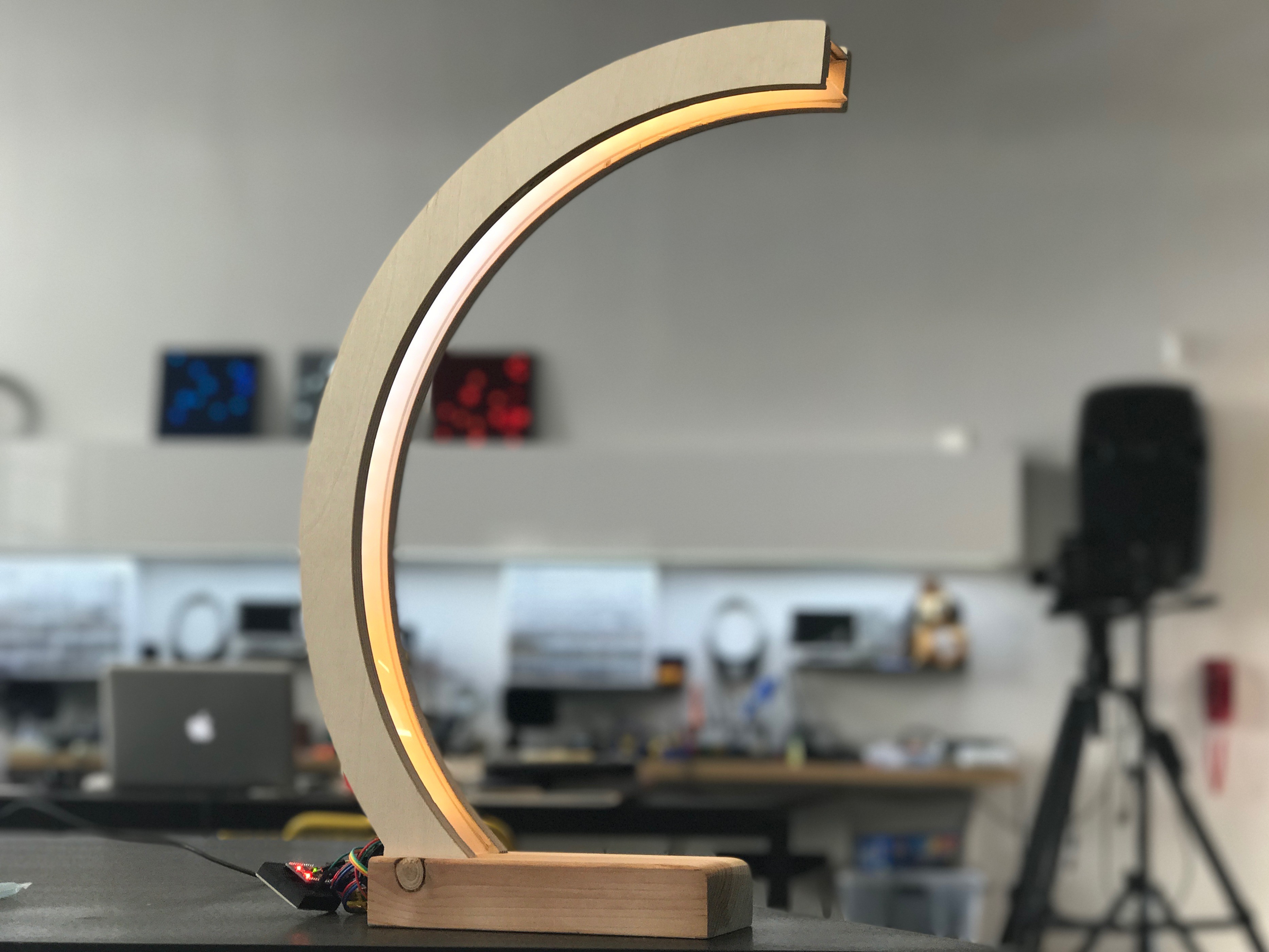
This was one of my first designs but only now have I gotten skilled up enough with Fusion 360 CAM and CNC on the ShopBot (thx Dan!) to actually realize this. I'm pleased the end result looks pretty close to the original design and the renders.
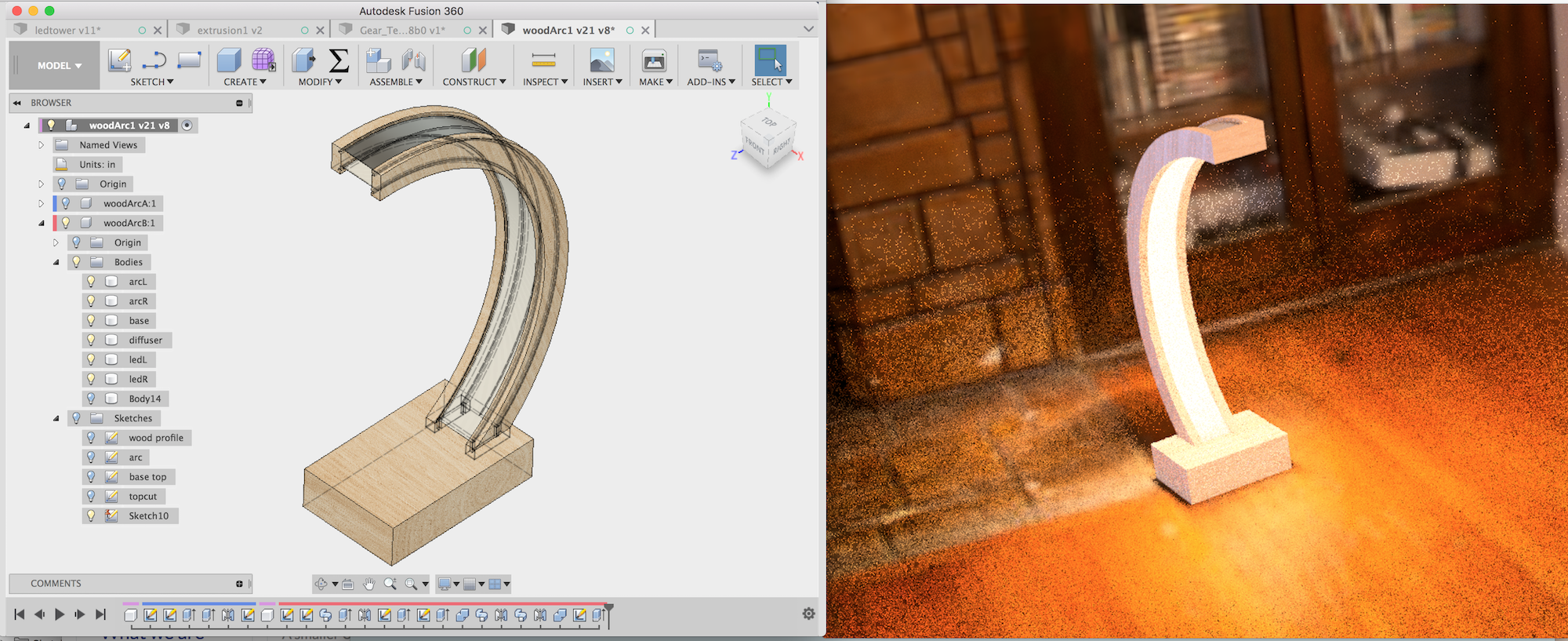
The three LED strips are comprised of two WWA (three color temperatures of white) and one strip of RGBW (a 4-channel variant of the popular WS2812/Neopixel strip). This means we can do RGB colors! A first for the lamps.
To join the two WWA strips together, I created a new 20mm 180º NeoJoint board. Again, thanks to the Othermill, I can create these on-demand (and a make a few extra just in case)
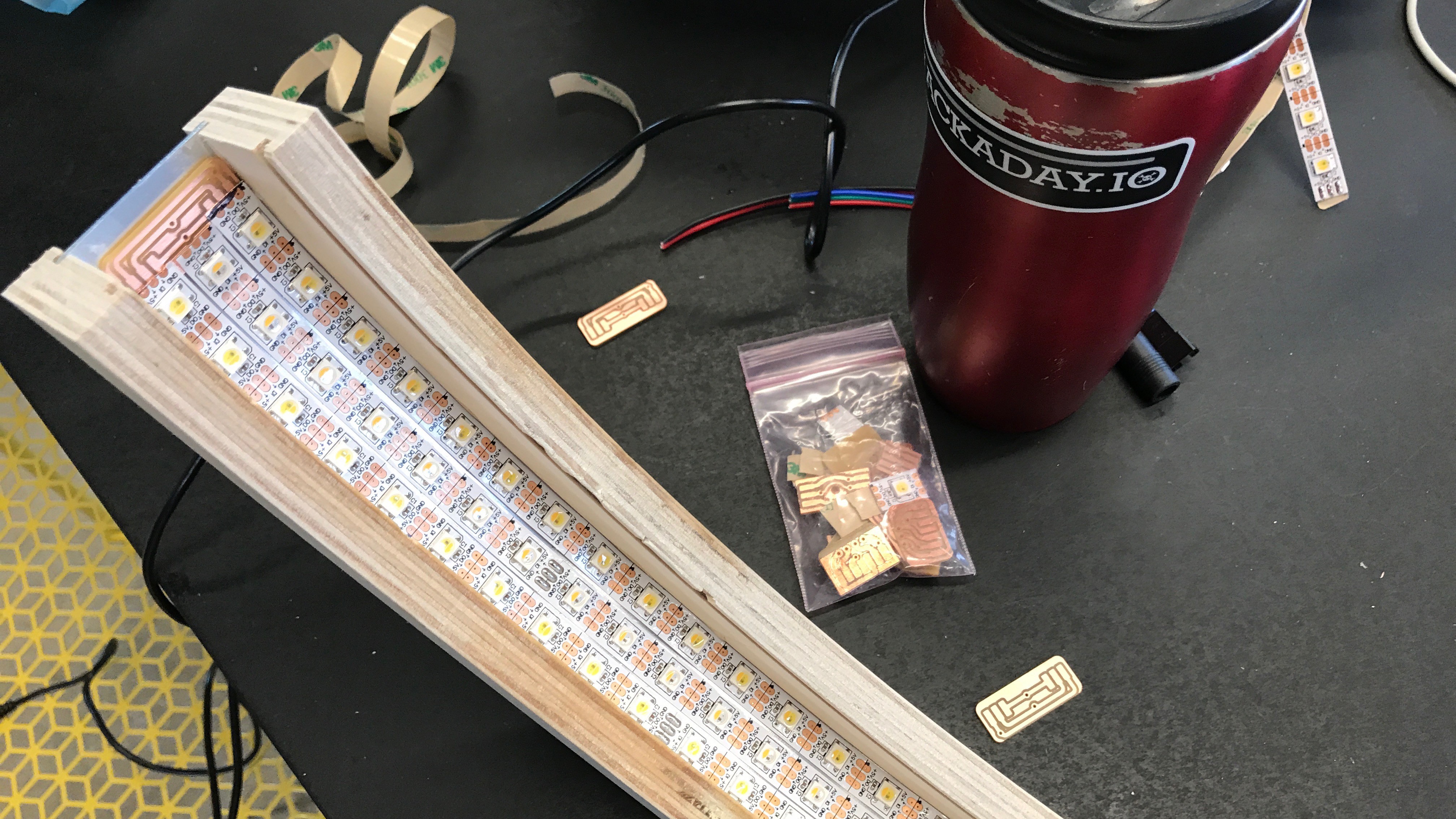
To create the wood pieces, I took my CAD design in Fusion 360 and with the help of Dan I created a CAM path for the Shopbot. We then milled out the two pieces from 1/2" baltic birch plywood.

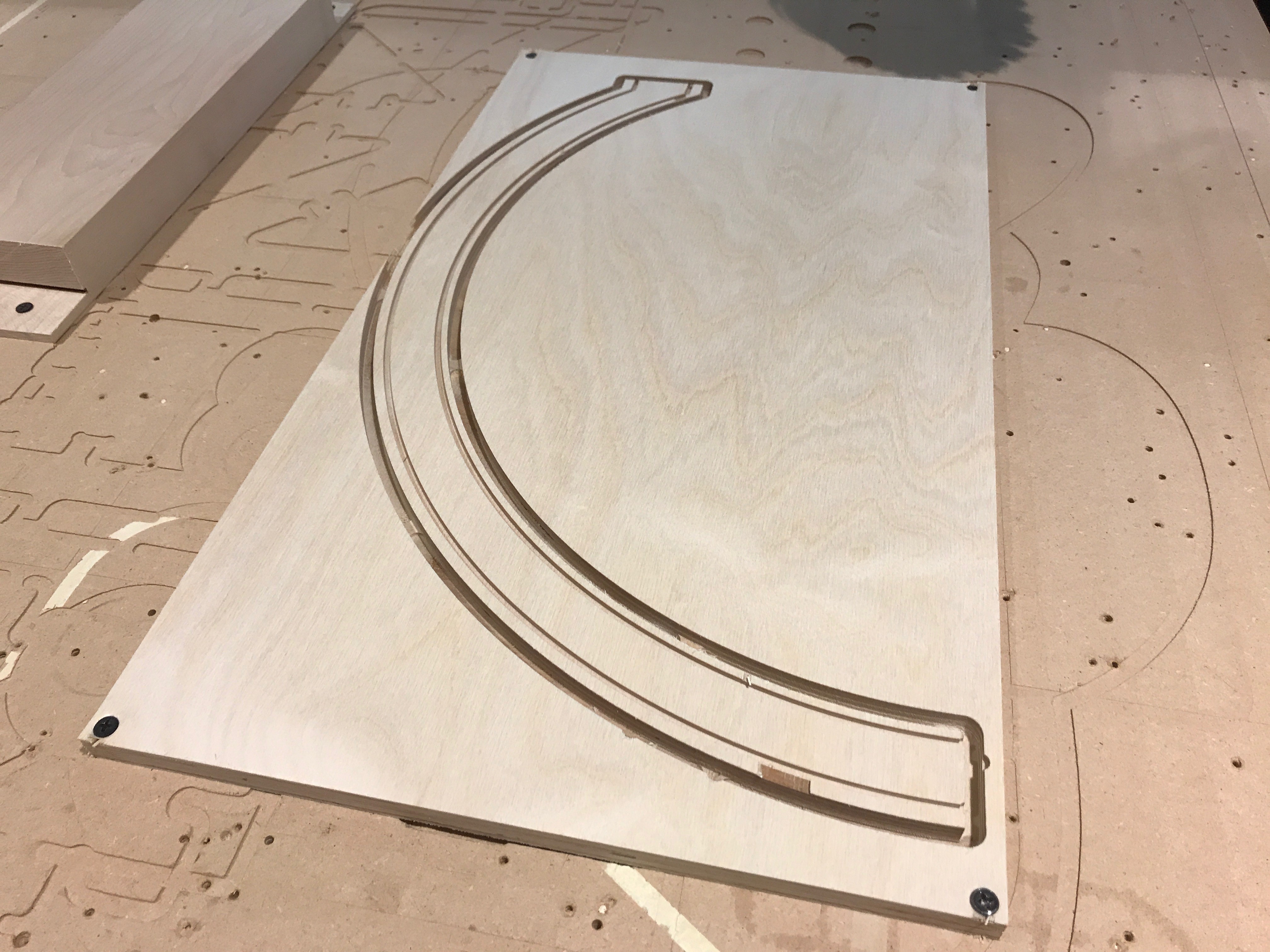
One problem we had was chip-out of the thin edge pieces (as seen in the above image). Part of this we think was due to the endmill being a little dull, part of it because the 1/4" endmill wasn't suited for delicate work. The next time we do this, it seems we should use the same 1/8" endmill we used for the channels for an initial pass. before switching to the 1/4" for the cutout.
With the wood parts cut out, I spent some time sanding them and using some wood filler to attempt to fix the chip-outs. And then it was time to assemble it all. I hand bent the 1/16" aluminum bar and used 5-minute epoxy to affix it to the wood pieces.
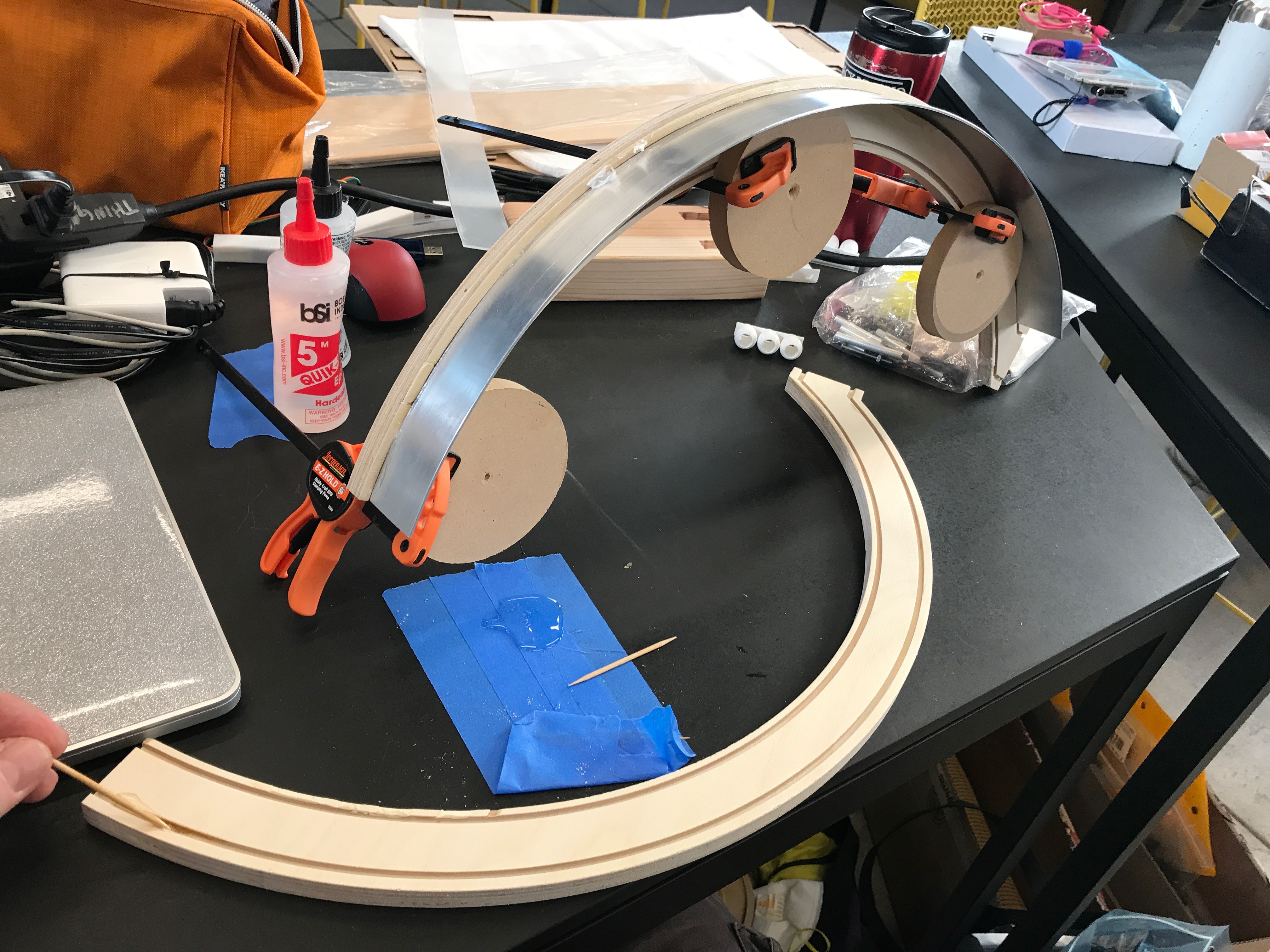
The original design had 1/16" channels but we created 1/8" channels because that's then endmill we had. In general this was a better solution I think, but it did mean I had some play with the 1/16" aluminum, so I used clamps and wood discs to attempt to push the metal bar against the outer edge of the channel. It mostly worked but was fiddly.
The electronics driver hasn't been addressed yet, so there's this little bit of embarrassment at the back of the lamp. :-)
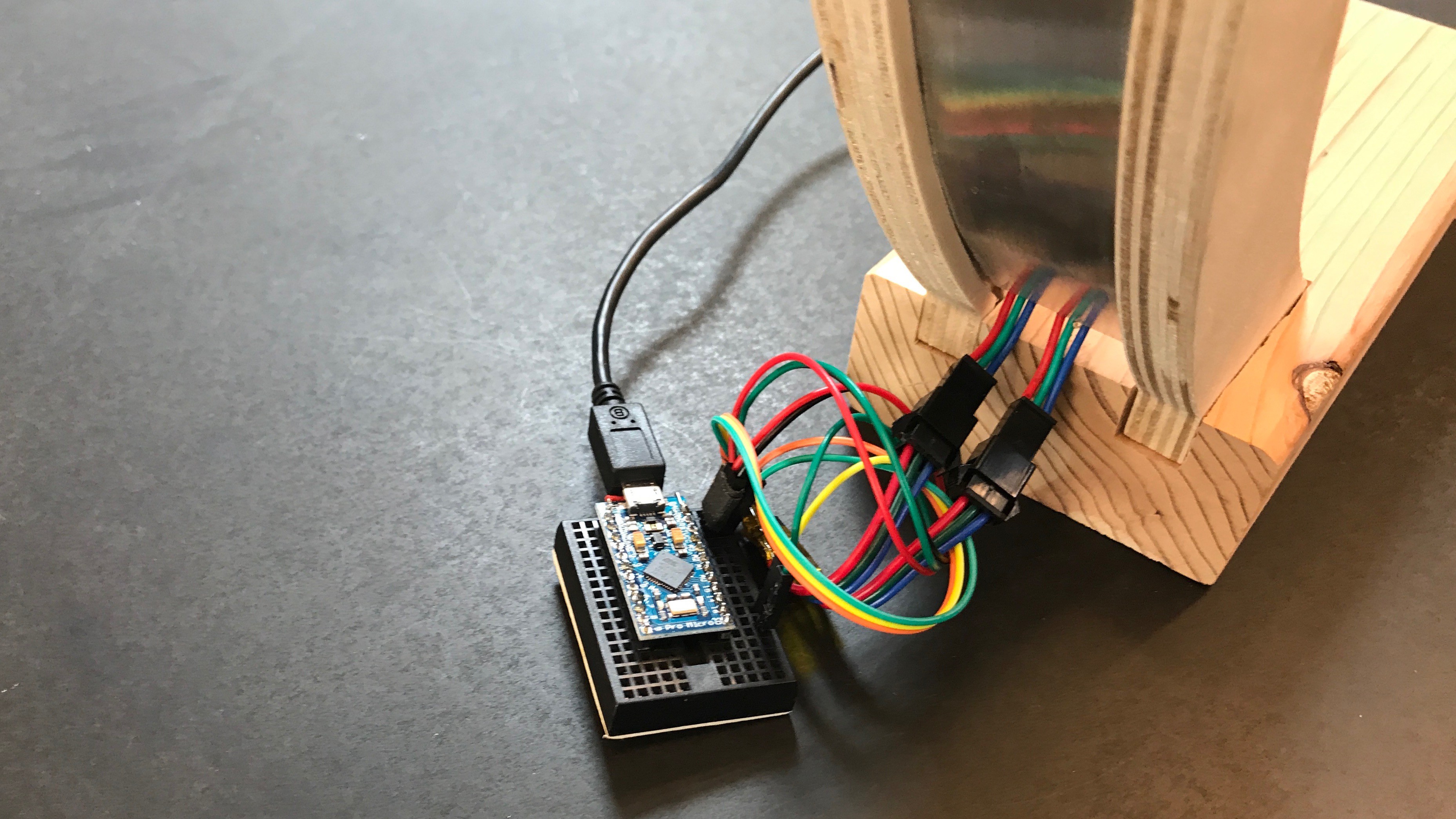
While it's not done yet, it's looking pretty good. The design is perhaps a bit thick for a desk lamp. I may be able to thin it out, or use this idea for a floor lamp.

 todbot
todbot
Discussions
Become a Hackaday.io Member
Create an account to leave a comment. Already have an account? Log In.